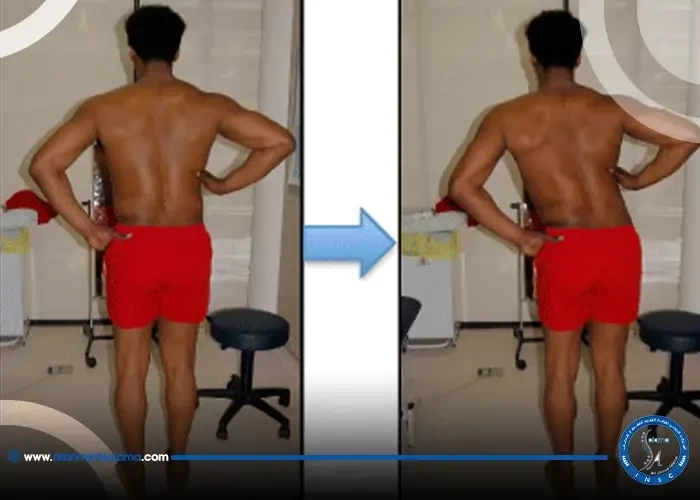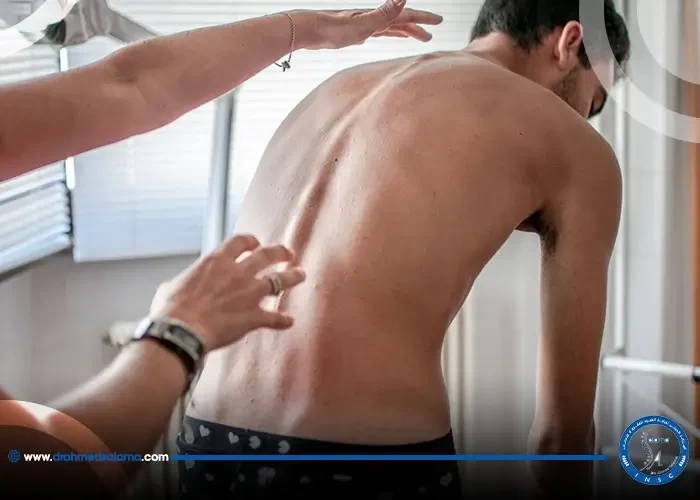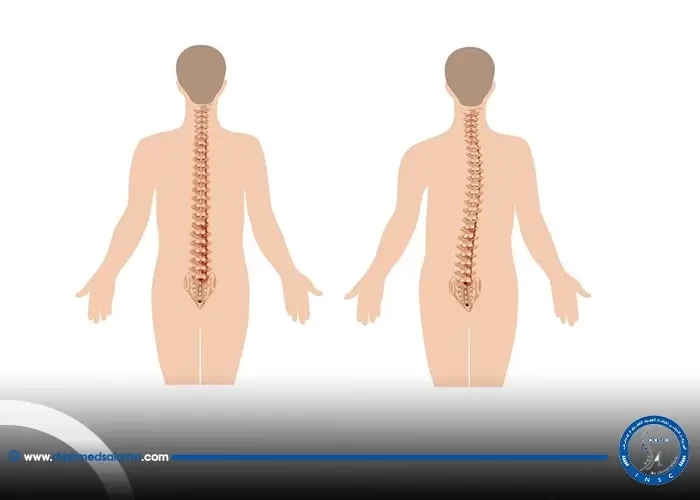Nasr City, 52 El Tayaran Street, in front of the Health Insurance Hospital

scoliosis exercises

Scoliosis is a medical condition that affects many people of all ages. It is a curvature of the spine that can cause discomfort, pain, and even affect breathing in severe cases. While traditional treatments for scoliosis often include surgery, physical therapy, and bracing, there are also exercises that can help alleviate some of the symptoms associated with spinal scoliosis. In this blog post, we will explore various spinal scoliosis exercises that can improve your posture and alleviate your discomfort. These exercises are easy to perform and require minimal equipment, making them accessible to everyone. So let's dive in!
Introduction to Spinal Scoliosis
Spinal scoliosis is a condition where the spine curves to the side, which can lead to posture problems, back pain, and other health issues. However, there are exercises that can help correct the spine and prevent the need for surgery. In the previous blog sections about spinal scoliosis exercises, readers have learned how pelvic tilts, cat-camel and double leg abdominal press, single leg balance, sitting rotation stretches, working the latissimus dorsi muscle, chest expanders, child's pose, and prone exercises can improve spinal alignment, core strength, balance, stability, and flexibility. These exercises are not specific to any one treatment plan, but they can help with proprioception, motor coordination, and reducing back pain. By incorporating these exercises into a daily routine, individuals with scoliosis can improve their quality of life and maintain a healthy spine.
Benefits of Exercise for Scoliosis
The benefits of exercise for scoliosis are numerous and significant. Scoliosis exercise helps to improve the posture and strength of the back muscles, easing lower back pain. In addition, regular exercise can help prevent scoliosis from worsening over time. Pelvic tilts, cat-camel and double leg abdominal press, single leg balance, sitting rotation stretch, and the chest expander exercise are all effective exercises that contribute to the improvement of spinal health. Additionally, child's pose and prone exercise provide relaxation and stretching of the muscles, while also correcting thoracic and lumbar curves. By incorporating these exercises into a regular routine, individuals with scoliosis can improve their overall spinal health and quality of life.
Pelvic Tilts for Posture Correction
Pelvic tilts are a great exercise for correcting posture in individuals with spinal scoliosis. By lying on your back with your knees bent and feet flat on the surface, you can easily determine whether your pelvis is level or tilted. This simple exercise can help you become more aware of your pelvic alignment and work to correct any imbalances. By engaging your core muscles and tilting your pelvis forward and backward, you can strengthen the muscles around your spine and help maintain proper posture throughout the day. When done regularly, pelvic tilts can have a significant impact on your overall posture and help improve the alignment of your spine. This exercise is just one of the many great tools available for individuals looking to improve their spinal health through targeted exercise and postural correction.
Cat-Camel and Double Leg Abdominal Press for Core Strength
Cat-Camel and Double Leg Abdominal Press are two great exercises for building core strength and improving posture. The Cat-Camel stretch involves getting on all fours and alternately arching and rounding your back, while the Double Leg Abdominal Press is performed by lying on your back and pressing your legs up towards the ceiling. Both of these exercises help to activate the muscles in your abdominals and lower back, which are essential for maintaining proper posture and spinal alignment. In addition, they can help alleviate discomfort associated with scoliosis by reducing the strain on the back muscles. Incorporating these exercises into your workout routine can have a significant impact on your overall spinal health and wellbeing.
Single Leg Balance for Balance and Stability
Section 5 of the spinal scoliosis exercises blog focuses on single leg balance, which is crucial for improving balance and stability. This exercise aims to teach pelvic control and stability while challenging the spine's stability. The patient has to balance on one leg while someone knocks the body slightly to disturb balance. This exercise can help build core and lower back strength, which is essential for improving spine positioning. By performing this exercise a few times a day, patients can see an improvement in their balance and stability, making daily activities easier to perform. Along with other exercises mentioned earlier, single leg balance can be an effective tool for scoliosis management.
Sitting Rotation Stretch to Release Tension
Section 6 of the blog focuses on sitting rotation stretch to release tension in the back. This exercise gently twists the spine, thereby strengthening the core muscles and reducing tension in your back. It's an easy exercise that can be done anywhere - on a chair, on the floor, or even at work. The sitting position is perfect for anyone who spends long hours sitting at a desk or driving. This exercise can benefit those with scoliosis as it helps to release tension and promotes good posture. Incorporating this exercise in your daily routine can go a long way in alleviating back pain and preventing further spinal curve progression. Remember, every little step counts in the road towards a stronger and healthier spine.
The Importance of Working the Latissimus Dorsi Muscle
In the previous blog sections, the importance of spinal scoliosis exercises has been highlighted. One specific muscle group that should not be neglected is the latissimus dorsi, which spans the entire back and provides support for the trunk. Working on the latissimus dorsi through exercises can help protect and stabilize the spine while also increasing overall muscle strength. A personal trainer can incorporate different ways to work on these muscles, such as the row exercise, in either an open or closed-chain format. With stronger muscles, the spine becomes more stable, helping with pain management and overall scoliosis treatment. By focusing on the importance of working the latissimus dorsi muscles, scoliosis patients can achieve better spinal health and overall physical well-being.
Chest Expander Exercise for Mild Scoliosis
The Chest Expander Exercise is a great addition to any scoliosis-specific exercise program. This exercise helps restore the thoracic kyphosis, stretch the rhomboid muscles, and improve lung capacity. By remaining proactive and performing these exercises, individuals may be able to improve their overall spinal health. It is important to keep the chest lifted and spine long while performing this exercise, and to progress to heavier repetitions as strength improves. In addition to the Chest Expander Exercise, other low-impact exercises such as Pilates, yoga, and tai chi can also help improve trunk flexibility and range of motion. Remember, any effective exercise program for scoliosis needs to be scoliosis-specific.
Child's Pose for Relaxation and Stretching
The Child's Pose is a great yoga exercise for relaxation and stretching, and it can be especially beneficial for those with spinal scoliosis. By kneeling, bending forward, and resting the upper body on the thighs, this pose gently stretches the spine, hips, and thighs while promoting relaxation and releasing tension. It is a great way to end a warm-up or cool-down routine to prevent injury and reduce muscle soreness. Combined with other exercises for core strength, balance, and stretching, the Child's Pose can help individuals with scoliosis develop good posture and alleviate pain and discomfort associated with spinal curvature. Incorporating yoga into a comprehensive exercise program can provide numerous benefits for overall health and wellbeing.
Prone Exercise for Correcting Thoracic and Lumbar Curves
The Prone Exercise is a great stretch for individuals with thoracic and lumbar curves, as it helps correct these areas with shoulder traction (ST) and shoulder counter-traction (SCT). As discussed in previous sections, focusing on core and lower back strength with exercises like Pelvic Tilts, Cat-Camel, Double Leg Abdominal Press, and Single Leg Balance can also help improve scoliosis. Additionally, it's important to work the latissimus dorsi muscle to help correct posture. The Chest Expander Exercise is a gentle way to work this muscle and can benefit those with mild scoliosis. To release tension, individuals can try the Sitting Rotation Stretch, and for relaxation and stretching, the Child's Pose is a great option. All of these exercises can be helpful in managing scoliosis and promoting spinal health.
Can scoliosis be cured?
Yes, even severe scoliosis can be treated. Treatment options include physical therapy, a belt, endoscopic spinal treatment, and surgery.
Is it possible to live with scoliosis without surgery?
In some cases of mild scoliosis (where the deviation does not exceed 20 degrees), treatment can be done with exercises and physical therapy sessions.





